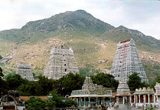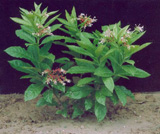Notes on counselling
Dealing with stigma
When I was a medical student in the nineteen seventies, we were told that psychiatry was considered a stigma by the people. I still remember what I read in a Western textbook of psychiatry that compared to the prestigious disciplines of neurosurgery and cardiology, psychiatry, along with the disciplines of skin and venereal diseases (now called sexually- transmitted diseases) were low-profile and less prestigious. This attitude prevailed, though the success rate after a neurosurgical operation or heart transplant (then a fashion) was not as spectacular as the treatment outcome of a psychotic episode, psoriasis or venereal disease. No wonder I was taken aback when I actually saw that the first general hospital of Asia which hosted a psychiatry outpatients’ clinic also had adjacent skin and venereal diseases clinics on the same floor. I went to one of the premier medical institutions of India at New Delhi and saw that the indoor wards of psychiatry, skin and venereal diseases were on the same floor too!
It took me a number of years to understand that the concept of stigma, which our teachers impressed upon us and which influenced the design of wards and clinics, was actually an imported Western concept that had no relevance in Indian culture. In the West, subjects who were marginalised for being physically and mentally handicapped or having incurable infectious diseases like leprosy were stigmatised and made social outcasts. That is why Jesus had to reach out to them, use his healing power to soothe them, bestow his love to accept them and invoke the Grace to uplift them. In his supreme compassion was sown the seeds of charity, brotherhood, altruism, humanitarianism and missionary work.
The Indian story was different and has different strands:
Firstly, the ṛṣis were immersed in spiritual pursuit. They did not do humanitarian or social work but taught the kings to do that as part of Rājadharma.
Secondly, Śiva, the supreme Lord of the universe, was portrayed as a wayfarer seeking alms and his consorts were the vagabonds, the outcasts, the marginalised, the addicts and even the ghosts. It is not surprising that the lunatics had as much access to him as the sadhus. The stigma of mental illness does not exist in that world-view. No wonder then that psychiatric patients were looked after in the giant Śiva temples of south India. They were not always allowed to enter the sanctum sanctorum as the highly concentrated energy systems therein could be disruptive for psychotic cases, but they were encouraged to make ceremonial walks along the labyrinthine temple courtyards and sit before special Yantras or energy-constructs. As a matter of fact, the concept of stigma was always taken care of in Indian socio-spiritual systems. The best example is that even today, construction of idols of the Supreme Mother, Durga are initiated by collecting clay from brothels.
Thirdly, the lineage of healing knowledge that is believed to have emanated from Prajapati Brahma, the Creator, descended to Lord Indra and then to the twin god-brothers (Aswin twins) into which the great ṛṣis were initiated and which became the science of Āyurveda. The primary considerations were the issue of longevity, protection of the foetus and the guard against insanity. Mental health existed in India as a concept long before the West acknowledged it.
Fourthly, through intuitive knowledge, Indian ṛṣis discovered Rawolfia Serpentina or Sarpagandhā as a remedy for schizophrenia, which actually was the only correct psychopharmacologic agent in the world till chlorpromazine was discovered in the nineteen fifties. Sarpagandhā was naturally distributed by Āyurvedic seers and big Śiva temples were ideal sites where patients were brought to receive the medicine as well as to have Śiva’s Grace and compassion.
This beautiful Indian heritage gives an all-inclusive world-view where even a schizophrenic can be as equally and spontaneously a child of Śiva as anyone else. There is no stigmatising hierarchy in front of the Supreme Lord who Himself roams with a begging bowl! It struck me that in ancient times, the Śiva temples were the perfect rehabilitation zones for schizophrenics. This spiritual world-view improved my counselling skills and taught me several things. Firstly, as a counsellor, it helped me shed any inhibitions in treating any subject, be it a case of schizophrenia or HIV. It helped me to be non-judgmental in dealing with subjects. Secondly, it helped me to remove inhibitions in clients having mental trauma, social inhibitions or deviancy ranging from behaviourial problems to homosexual conflicts. Thirdly, and this is the most important, it helped me to introduce a spiritual element into my healing armoury in cases like psychosis where even in-depth psychoanalysis is not done for fear of disruptive forces getting disinhibited. I feel proud to use my Indian spiritual heritage in counselling zones where both the subject and healer share a space to grow.
Dr. Soumitra Basu, a practising psychiatrist, is the Director of a new school of psychology, the Mira Vision Trust. He is also one of the editors of NAMAH.
Share with us (Comments, contributions, opinions)
When reproducing this feature, please credit NAMAH, and give the byline. Please send us cuttings.

 A Śiva temple
A Śiva temple
 Rawolfia Serpentina
Rawolfia Serpentina